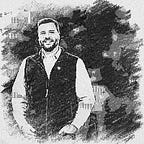What the Pandemic Uncovered — Pt. 2
The pandemic did not cause economic inequality in the US. It revealed a long-standing divide that may be too far gone to repair.
Continued from part 1.
The coronavirus lockdowns in the first half of 2020 triggered an explosion in unemployment. More than 14 million Americans became unemployed between February and May in the first wave of America’s pandemic experience. More Americans lost their jobs in three months than in three years of the Great Recession (2007–2009). The US unemployment rate rose from 3.8% in February to 14.4% in April — the highest rate since the Great Depression.
Personal incomes among nearly all Americans dropped in 2020. An eviction moratorium from the federal government is all that stands between the poor and a homeless crisis.
Among the rich, it was a different story. Between March and October 2020, while many Americans struggled to keep their jobs, homes, and sanity, the wealth among America’s billionaires (644 individuals people) grew by almost $1 trillion. An irrational stock market boom fueled most of that surge in wealth, further evidence of the alternative realities experienced by Wall Street and Main Street.
These are longstanding trends that did not start in the pandemic but were revealed with greater clarity during the pandemic. Since 1979, income among the top 1% in America has grown 160% while those in the bottom 90% shrunk.
Opponents of pandemic lockdowns argue Americans cannot afford the economic costs of another lockdown. Proponents of healthcare say Americans cannot afford an open society where social distancing is lost, and the coronavirus is free to spread even worse than it already has. Both are right! While no free society can contain and manage a pandemic crisis without some level of upheaval and necessary adjustment, the deficiency of America’s economy has been particularly pronounced.
The tension between these two arguments, public safety versus public freedom, is the nature of a crisis. But the polarized realities experienced by the rich compared to America’s poor and middle class is another matter altogether.
The wealthiest segments of American society drastically increased their wealth. At the same time, small business owners and middle-class Americans questioned whether they would make it out of this year intact — many won’t! Beneath the middle class, politicized safety nets protected the poor, but even those protections have been a source of constant political debate and question moving forward. The bulk of the pandemic’s economic costs will land on the middle-class, small business owners, and their children as the stimulus and relief packages will require generations to repay.
America’s economic divides are not the result of the pandemic. These divides are the result of a broken economic system exposed by the pandemic.
Years ago, I did a podcast series on the history of economic inequality in which I noted an interesting pattern. Throughout history, whenever the gap between rich and poor grew too wide, some level of systemic adjustment or reset usually followed. Those adjustments came in the form of revolutions or economic crashes and collapses, but they always came. No culture or nation has been immune to this.
The disparity levels that the pandemic has uncovered between the rich and everyone else suggest America could be on the verge of its moment of reset.
This is part two in a four-part series What the Pandemic Uncovered. Read part three.
